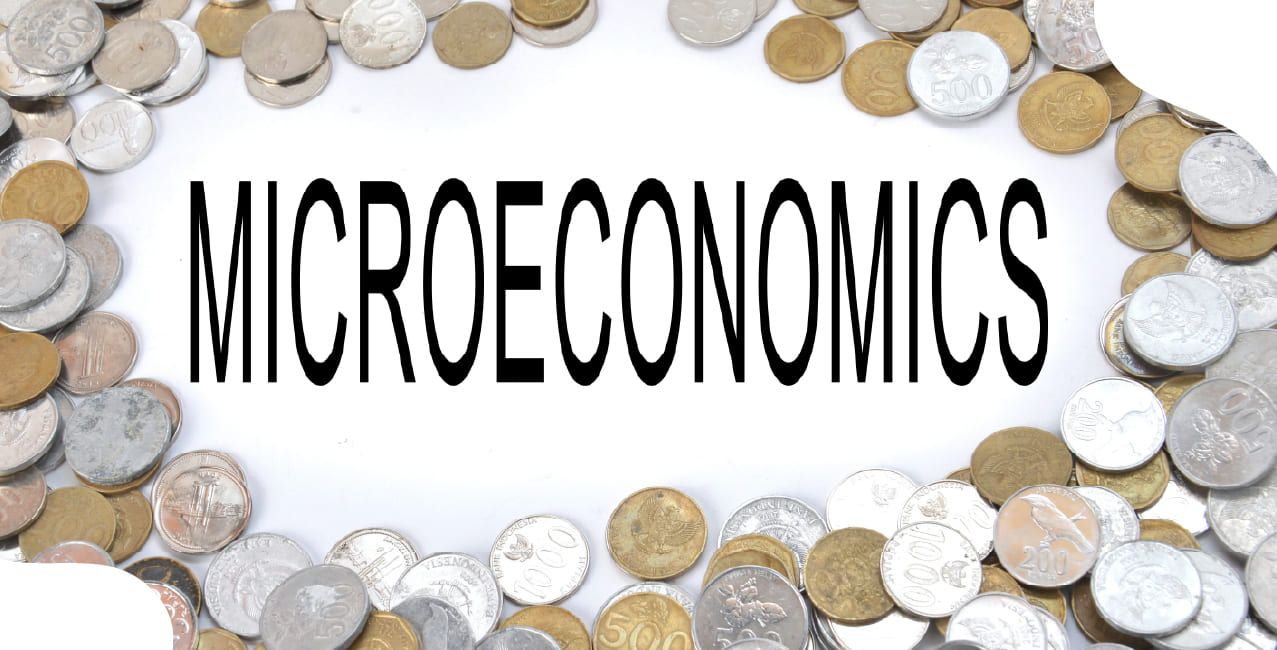
Author
LoansJagat Team
Read Time
6 Min
17 Sep 2025
What Is Microeconomics – Basics Of Individual Economic Behaviour
Summary Points:
- Microeconomics helps people and businesses make smart choices with limited money and resources.
- Prices guide what we buy or sell by showing how valuable or scarce something is.
- Markets balance demand and supply without needing a planner, using prices as signals.
- Learning microeconomics improves money use, business planning, and everyday decision-making.
Fun Fact: The term “microeconomics” was first coined in 1933 by Norwegian economist Ragnar Frisch, who also introduced “macroeconomics.”
Let’s say you have ₹1,000 to spend on fun this month. Bowling costs ₹250 per game, and a pizza night with friends costs ₹200. If you only bowl, you can play 4 games. If you only eat pizza, you can enjoy 5 outings.
However, you want both, so you decide on two bowling games and two pizza nights, which leaves ₹100 for snacks. That’s exactly what microeconomics is about: making smart choices when your money is limited. We all do it every day, often without even realising it. Isn’t it interesting how simple numbers can shape our plans?
Here’s the breakdown:
- Budget: ₹1,000
- Bowling: ₹250 × 4 = ₹1,000 (if only bowling)
- Pizza: ₹200 × 5 = ₹1,000 (if only pizza)
- Balanced choice: 2 bowling games (₹500) + 2 pizza nights (₹400)
- Leftover: ₹100 for snacks
This blog explains the basics of microeconomics, how individuals and businesses make everyday money decisions, and how prices, choices, and limited resources shape our spending, saving, and trading habits.
What Is Microeconomics?
Microeconomics is the study of how individuals, households, and businesses make decisions about spending, saving, producing, and buying in a world with limited resources. It focuses on how these small decisions shape prices, supply, demand, and market behaviour.
Sounds complex? Let’s break it down with a fun fruit market example
Let’s Understand It with a Simple Example
Imagine you walk into your local fruit market with just ₹100 in your pocket.
- Mangoes cost ₹20 each
- Bananas cost ₹10 each
Now you're hungry and want both fruits, but money is limited!
Option 1:
- Buy 3 mangoes = ₹60
- Remaining ₹40 = 4 bananas
Option 2:
- Buy 2 mangoes = ₹40
- Remaining ₹60 = 6 bananas
Here’s where microeconomics kicks in: it studies how you make this decision:
Will you go for more bananas?
Or fewer mangoes with higher satisfaction?
Microeconomics is all about these daily trade-offs, where you aim to get the most value (or utility) from your limited budget.
Price Change = Behaviour Change
Now suppose the price of mangoes drops from ₹20 to ₹10 each. What happens?
- You might now buy 5 mangoes instead of 2 or 3, because they’re cheaper!
- This leads to increased demand for mangoes. That change in your behaviour? That’s microeconomics in action.
Fun Facts
- Over 60% of India's workforce is employed in small-scale or individual decision-making environments, which microeconomics helps analyse.
- E-commerce platforms like Amazon and Flipkart use microeconomic principles to adjust prices dynamically using AI!
- Fast-food chains study price elasticity—If they raise the price of a burger by ₹5, how many fewer people will buy it?
Why Does Microeconomics Matter?
- It helps businesses decide how much to produce and what price to charge.
- It tells the government how taxes or subsidies might impact different income groups.
- It explains why scarcity forces us to make choices like choosing between fuel and food when prices rise.
Key Concepts in Microeconomics:
Microeconomics explores how individuals and businesses make choices in the face of limited resources. To understand these decisions, it is essential to grasp several fundamental concepts that explain market behaviour and economic outcomes.
Together, these key concepts form the foundation of microeconomics, helping us analyse how markets function, how resources are allocated, and how incentives shape economic decisions at the individual and firm levels.
What Is The Role of Markets and Prices in Microeconomics?
Markets bring buyers and sellers together, allowing goods and services to be exchanged efficiently. Prices guide decisions by showing how scarce or valuable a product is, balancing supply and demand.
Let’s understand it with the help of an example:
Imagine a popular lemonade stand in your neighbourhood. On a hot summer day, 100 people want lemonade, but the stand only has 50 cups.
Here’s what happens:
- The stand owner sets the price at ₹10 per cup. At this price, only 50 people are willing to buy a perfectly matching supply!
- If the price were just ₹5, 90 people might want lemonade, but there wouldn't be enough for everyone. This creates a shortage, and some customers will go thirsty.
- If the price rises to ₹15, only 30 people might buy, so the stand owner might have leftover lemonade.
How does this help?
- The price signals the stand owner to maybe make more lemonade next time if demand is high.
- Buyers who want lemonade at ₹10 will buy it, while those less eager might skip it, so the scarce lemonade goes to those who value it most.
- The market coordinates the choices of many customers and the seller without anyone having to organise it all.
In microeconomics, markets and prices work just like this lemonade stand, but on a much bigger scale, helping to efficiently allocate resources and balance what’s produced and consumed.
Why Study Microeconomics?
Microeconomics is about how people and businesses make smart choices when money and resources are limited. It shows how prices and needs affect what we buy, sell, or save in daily life and work.
Let’s say Arjun has ₹500 to spend at a weekend fair. Here’s what he loves:
- Chaat= ₹50 per plate
- Toy darts game= ₹100 per play
If he spends all his money on chaat, he can have 10 plates (₹50 × 10), and if he spends all on dart games, he can play 5 times (₹100 × 5).
But Arjun wants both food and fun. After thinking like a microeconomist, he chooses:
- 6 plates of chaat = ₹300
- 2 dart games = ₹200
This way, he gets tasty food and entertainment without overspending; that’s resource allocation in action.
Now scale this thinking up to a shop deciding how much stock to buy, or a government deciding how to split a budget between education and healthcare; that’s why microeconomics matters.
Benefits of Studying Microeconomics
Studying microeconomics offers a range of practical benefits that apply to both everyday life and professional decision-making.
These benefits make microeconomics a powerful tool for making informed choices, maximising value, and navigating today’s dynamic economy.
Conclusion:
Microeconomics is about making smart choices when money and things are limited. It shows how we pick between options, how prices are set, and how markets work. It helps in spending wisely, running businesses, and making good plans. Simply put, it’s a guide to getting the most value from what we have, something useful for everyone.
FAQs:
Q: What is human capital in microeconomics?
It’s the economic value of a worker’s skills, knowledge, experience, and qualities that improve productivity.
Q: What is the method of microeconomics?
Microeconomics uses the scientific, deductive, and inductive methods based on observation, hypotheses, data collection, and analysis.
Q: What is the nature of microeconomics?
Microeconomics studies individual units like households and firms, focusing on resource allocation, prices, and decision-making behaviour.
Q: Why do we have scarcity?
Scarcity happens when resources are limited but wants are unlimited, due to high demand, limited supply, or production constraints.
Other Related Pages | |||
About the Author

LoansJagat Team
‘Simplify Finance for Everyone.’ This is the common goal of our team, as we try to explain any topic with relatable examples. From personal to business finance, managing EMIs to becoming debt-free, we do extensive research on each and every parameter, so you don’t have to. Scroll up and have a look at what 15+ years of experience in the BFSI sector looks like.

Quick Apply Loan
Subscribe Now
Related Blog Post


